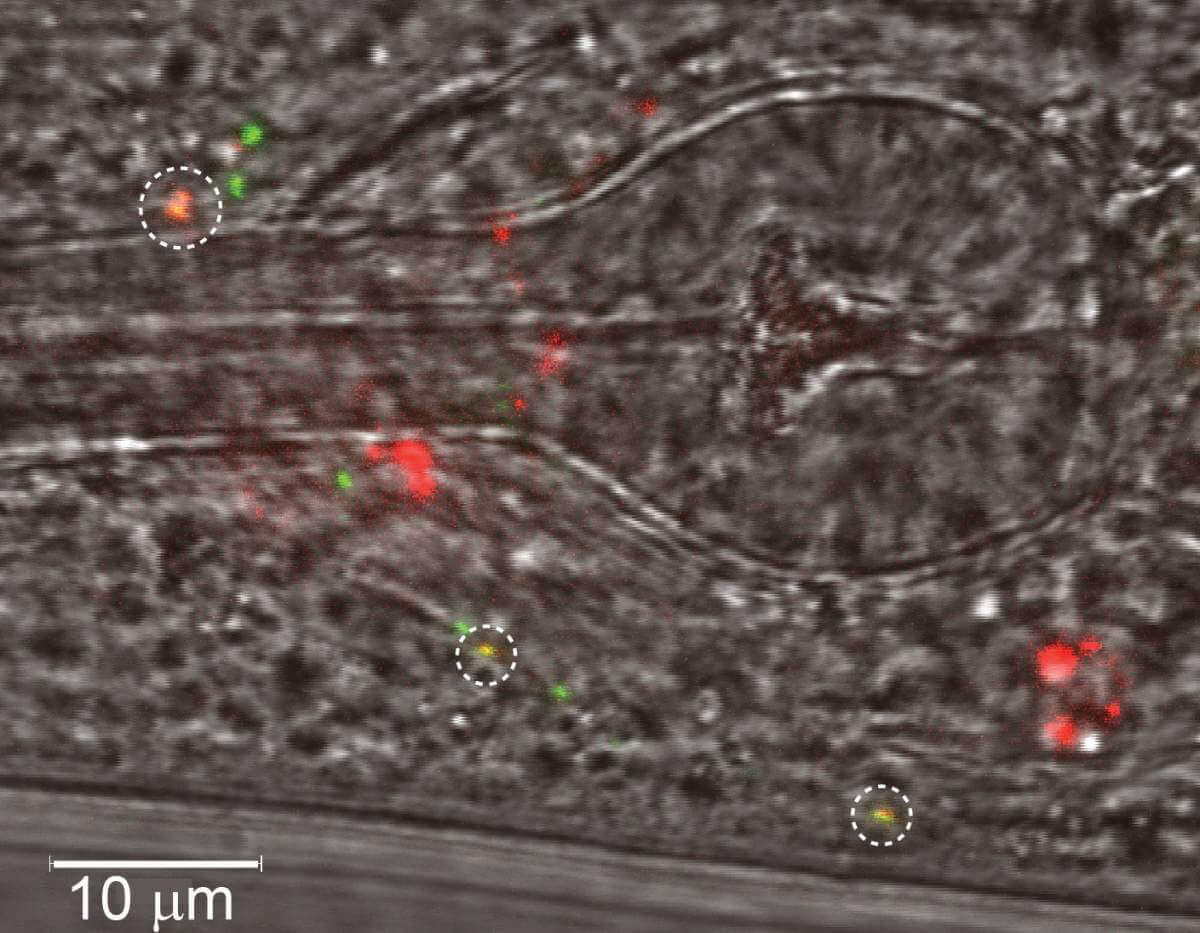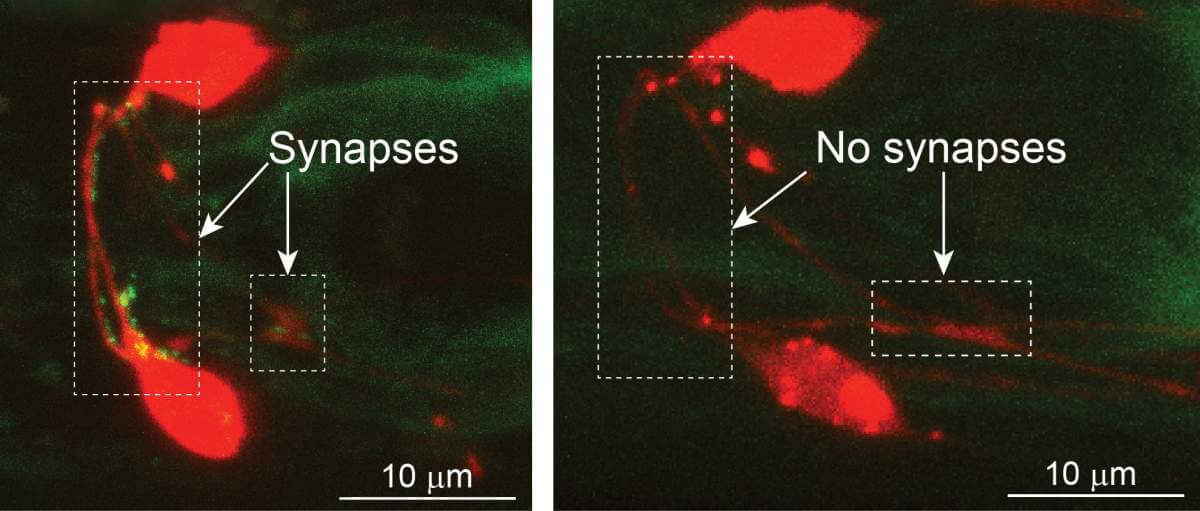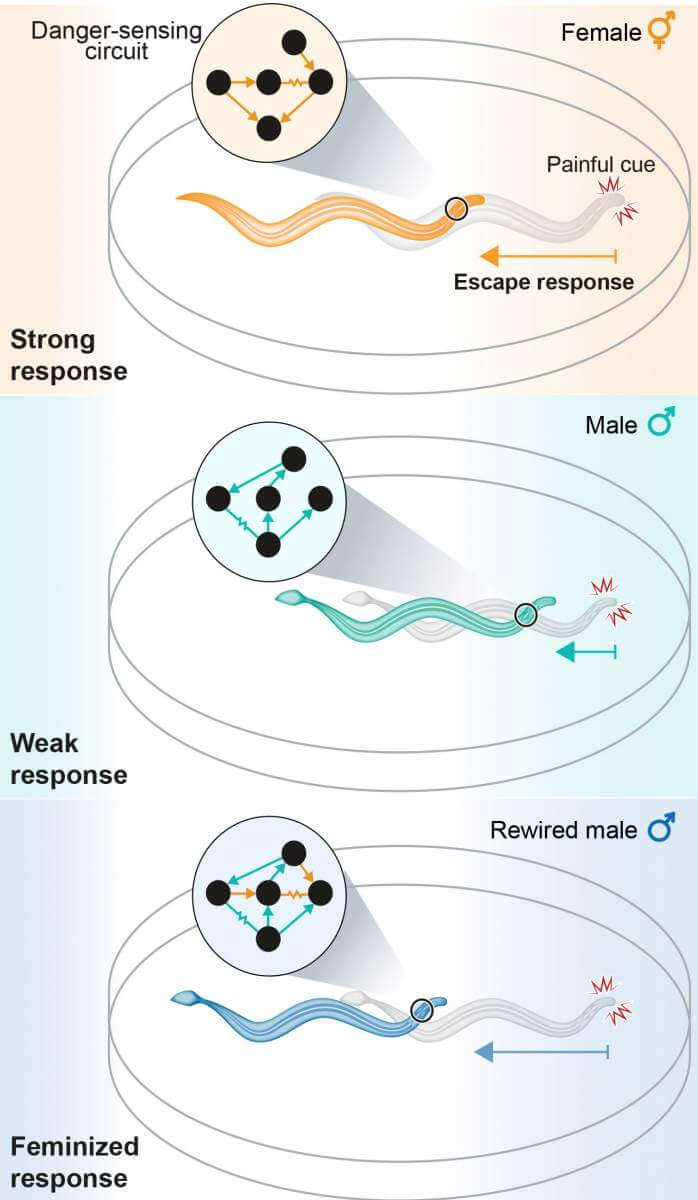The research findings illustrate how changing the synapse map may lead to a change in behavior
In the face of danger, the basic instinct of animals is to run away - and quickly. But when microscopic worms were exposed to a painful stimulus in a lab at the Weizmann Institute of Science, the females immediately fled - while the males stayed put and showed greater tolerance to the stimulus. The scientists were surprised by such a clear difference between the species, and another creature so simple from an evolutionary point of view. This variation between males and females was opportunity for them To examine one of the great questions of the brain: how the neural wiring, i.e. the connections between nerve cells, dictates behavior.
"We wanted to check how such different behavior of females and males is coded in neural networks," says Dr. Mittal Oren-Suisa from the department of neuroscience at the institute. Indeed, the so-called transparent worm C. elegans She is an excellent candidate for researching this issue. This capillary worm, which is about 1 millimeter long, is characterized by a relatively wide range of behaviors, and the connections between its 300 nerve cells have been fully mapped in both species.

The research started with a series of experiments led by the research student Vladyslava (Lada) Pachuk, in which the researchers tested what happens to the worms when they are exposed to dangerous substances. The scientists studied the pain receptors (similar to the pain receptors in humans), which allow the worms to sense dangerous substances. To the surprise of the researchers, the response of the receptors was the same in both sexes, but the behavioral response was, as mentioned, completely different: the females immediately escaped from the place of danger, while the males remained in place until the intensity of the stimulus crossed a certain threshold, that is, until the concentration of the dangerous substance was high enough. When the scientists examined the neural circuits responsible for processing the sensory information, they saw that they did indeed consist of the same nerve cells in both sexes, but the map of the connections between them differed in a large number of places.
In order to examine which of the differences that were discovered affect the observed behavior, Dr. Oren-Suissa included her colleague in the department, Prof. Elad Schneidman, whose group investigates, among other things, the relationship between the architecture of neural networks and their function. Based on the results of the experiments with worms, a joint research student of the two laboratories, Gal Goldman, built a computational model of the danger sensing circuits in males and females. The model that Goldman built predicted that the behavioral differences could indeed be explained through the differences in the wiring between the cells of the two sexes. Moreover, the model predicted that the most significant difference between female and male wiring stems from only one particular synapse, that is, a connection between two nerve cells, which exists in females but not in males.
The next step was to put the model's prediction to the test and try to "reprogram" the males. In a challenging procedure of molecular engineering, Pechuk and her colleagues added the missing connection to the circuit responsible for sensing danger in the male worm. The results were amazing: the males with the synthetic synapse began to flee from danger just like the females.

"It is clear to us that a significant part of the nature of the activity of neural circuits is determined by the connections between the nerve cells in the circuit, but it is very difficult to investigate and experimentally characterize the relationship between the structure of the circuit and its properties in complex systems such as the brains of mammals," explains Prof. Schneidman. "The worm's nervous system, on the other hand, is relatively simple and accessible, so we were able to reprogram its neural circuits and test the predictions of the computational model we created."
The question that remains open is why did the male worms develop a tendency to endanger themselves? The researchers believe that behind this behavior stands the evolutionary force that Darwin called sexual selection: preference for traits that promote finding a mate - even at the "price" of greater exposure to predators or other dangers; An iconic example of this is the peacock's tail. In other words, the researchers hypothesized that a response to danger or pain would have stood in the way of the male worms to the females.

"The male worm must take risks - if he avoids any ominous signal in his environment, he will not reach the female," explains Dr. Oren-Suisa. The female worm, on the other hand, does not necessarily need a male, as it is hermaphrodite - its reproductive organs produce both eggs and sperm, so it can fertilize itself.
The experiments in the laboratory supported this hypothesis: while non-transgenic males immediately jumped towards females - and to hell with the danger signals on the way - the transgenic ones moved in complicated paths and retraced their tracks again and again; As a result it took them ten times longer to get potential pair girls.
The research findings illustrate how changing the synapse map may lead to a change in behavior. The human brain is indeed much more complex than the nervous system of C. elegans And it has trillions of synapses, compared to about 5,000 in the tiny worm, but the basic architecture based on connections between nerve cells is the same architecture. "A change in one synapse will not lead to a change in behavior in humans, for that a rewiring will probably be required on a completely different scale," clarifies Prof. Schneidman. The research findings may also be relevant to the construction of artificial systems that mimic the activity of the brain, all or parts of it, and they outline a new direction for the study of the mechanisms responsible for differences in the perception of pain between the sexes - differences that have been documented in studies of more complex evolutionary animals, including humans.
Staff scientist Dr. Yehuda Salzberg from Dr. Oren-Suisa's laboratory and scientists from the University of Buffalo (SUNY) and the University of Rochester also participated in the study.
C. elegans Develops from an egg to an adult worm within 3 days. The worm lives in the laboratory for about 3 weeks, but in its natural environment - rotting fruit in the soil - it can survive for months. She has no eyes or ears, but she reacts to lights and sounds and is able to learn and retain memories for about 24 hours or more, not bad even in human terms.
More of the topic in Hayadan:
